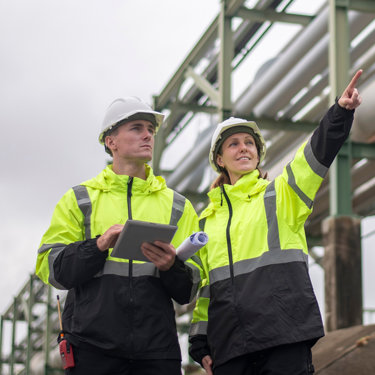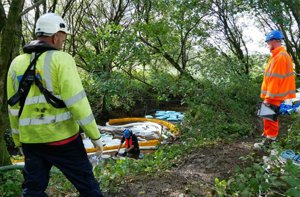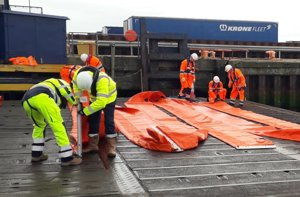
Flood management
Ready to discuss your project?
Please leave your details and a member of our team will reach out to discuss your requirements in more detail and arrange next steps.
We help organisations affected by flooding get their operations back up and running by removing flood water and hazardous waste quickly and compliantly.
Flooding is one of the most frequent and costly emergencies. Statistically, you’re more likely to experience a flood than a fire - and the clean-up operation is estimated at around four times higher.
Whether a result of natural events or non-weather emergencies, a flood can stop your business from operating and contaminated floodwater can pose a serious risk to the environment and public health.
In rural or urban environments, we bring specialist teams and equipment to analyse the water for any contamination and deal with it quickly and efficiently, in the most appropriate way.
Features
Deal with floodwater fast!
Expert contamination analysis
A range of responses
Flood damage
Ongoing monitoring
Added value
Ground and buildings may flood for a variety of reasons including burst pipes, malfunctioning equipment, fire suppression or excess rainfall. They are notoriously difficult to predict, and floodwater may behave differently depending on the speed of the flow and its contaminants.
When responding to flood incidents we are aware of the following:
- the presence of bacteria that can spread infectious diseases
- the danger of Legionella spreading to human-made water systems
- toxic gases or industrial chemicals leaking into floodwater
Safety is of the utmost concern, and we always wear the correct PPE and adhere to strict hygiene regimes when dealing with floodwater.
Floodwater analysis
Floodwater is rarely just water. Depending on the location it may contain chemicals, sewage, oil and other substances so our first step when we attend any flood is to analyse the water so that we – and you – know exactly what we’re dealing with.
Then we can take the appropriate measures to manage the water safely, using specialist equipment and man power to remove every last drop.
A range of responses
When water is uncontaminated it will usually be over-pumped to relieve the water pressure and get it away from buildings. Where contaminants are present, the exact response will depend on the location and scale of the incident. Water may be pumped into tankers for removal and processing or where volumes are too great an on-site treatment and filtration system can be set up.
Discharging unchecked water, however clean it may look, could not only cause further ecological damage but also put you in breach of environmental legislation.
We make sure we fully understand the local drainage network, so the correct pathways are used.
Flood damage
As floodwaters drop, they often reveal significant damage to the fabric and contents of your buildings. It’s your responsibility to ensure that any contaminated waste removed from the premises is handled and disposed of properly and we remain on site to manage this process.
We can handle the recovery of damaged goods, sort items and handle any repackaging required. This includes dangerous goods.
This can help minimise insurance claims and where necessary we’ll liaise with your insurers further to ensure they have the details they need.
Ongoing monitoring
Where floodwaters are discharged into waterways it’s vital these are monitored for any changes. By taking readings both upstream and downstream of the discharge point we can be sure no pollutants are entering the waterway.
Flood prevention planning
The best way to guard against business disruption and environmental damage is to prevent flood water from entering your site or premises. We can identify entry points and recommend measures to prevent floodwater damage in the future.
You might also be interested in...
Environmental compliance today, creating a sustainable tomorrow
Helping you reduce risk to the environment and your operation by managing assets compliantly while achieving commercial, ESG, and net-zero goals.
Contact our experts



